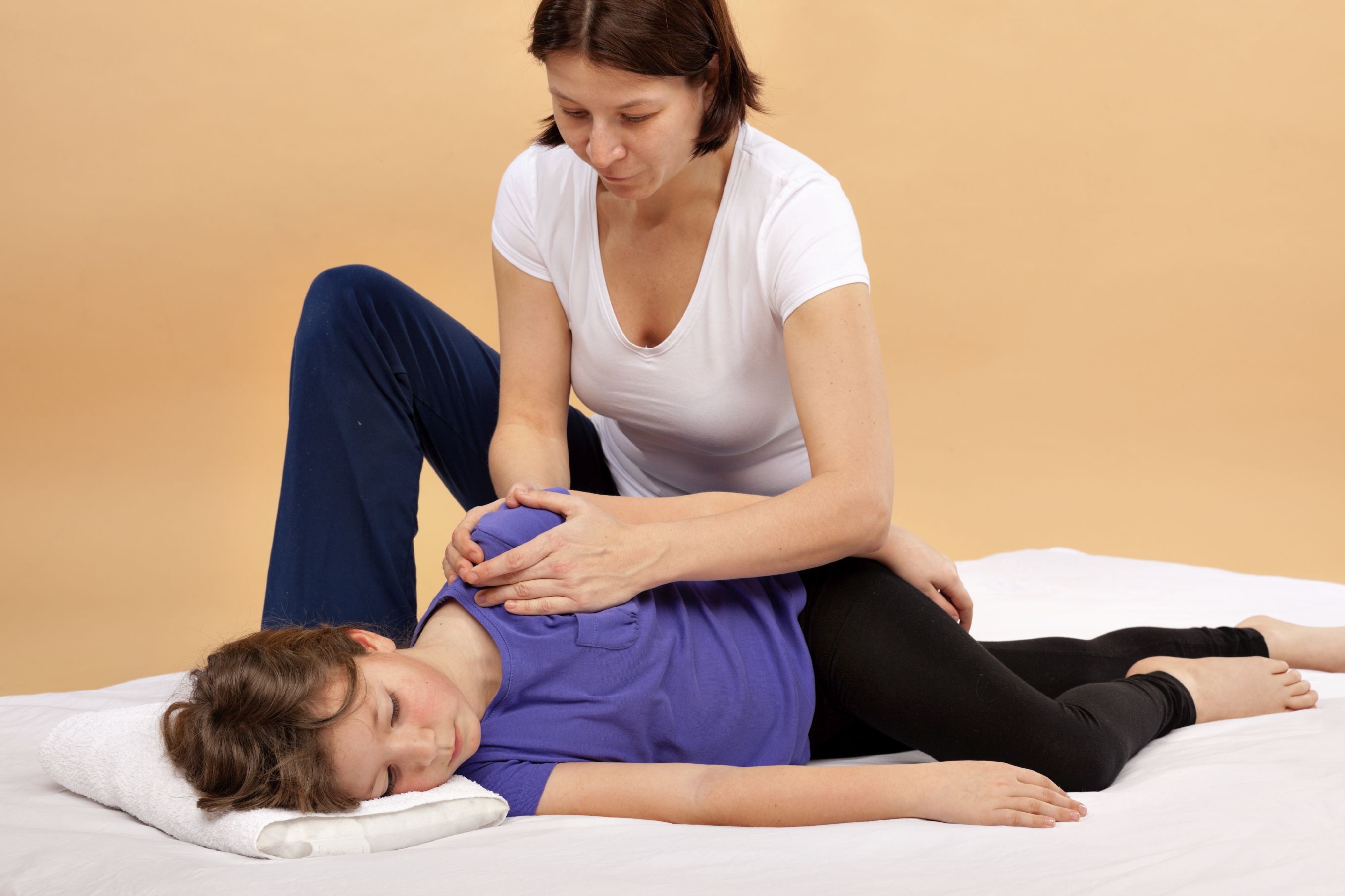
Lillian, a friend’s 14-year-old daughter who has significant social anxiety, recently came to our house for a dinner party. It took her a long while to get comfortable in the small crowd, but what amazed me was her transformation when her mother and I talked about her craniosacral therapist. As Lillian repeated the therapist’s name, her whole demeanor changed: She smiled, her face lit up and her entire body seemed to relax fully for the first time that evening.
Carol McLellan, a craniosacral (CST) instructor for Upledger Institute International, isn’t surprised by my story. “Children all along the spectrum of autism and learning disabilities, including ADD, ADHD, dyslexia and dyscalculia, also respond well to CST,” McLellan wrote in a 2012 article in Massage Today.
John E. Upledger, D.O., one of CST’s developers, completed a three-year study with autistic children in the 1970s. He found that CST made a difference for them, noting that “improved socialization [of patients] is often demonstrated by showing love and affection to parents and caretakers, as well as beginning to interact with other children and adults, whereas previously their interactions were with inanimate objects.” Still, this hands-on healing modality is not well known today.
Go with the flow
“'Craniosacral’ refers to the whole spine: the cranium at the top of the spine and the sacrum at the base,” says Heather Islander, LMP, CST, MIT, a Seattle-based practitioner whose training includes pediatric CST. “There is a series of three membranes that surround the spinal cord and connect to the bones of the head. The circulation of cerebrospinal fluid within this system creates a pulselike rhythm. The membrane system holds and transfers tension throughout your body . . . I work with the natural movements of your bones to release the restrictions held within this membrane system.”
This technical definition can’t begin to describe the level of relaxation CST brings to a patient. This method of gentle touch puts your body in a parasympathetic state so it can heal, says CST therapist Colette Crawford, R.N., who is also a prenatal yoga instructor and the founder of Seattle Holistic Center.
“Everybody knows what it is like when life is smooth and you have this ease, and you call that ‘flow.’ There is a natural state within each one of us that is a deep presence. In this presence, everything in your body flows, and your mind will follow,” says Barbara Coon, LMT, an advanced CST therapist who practices in Seattle. “There is this moment in a CST session when the client feels that. I had a 9-year-old client ask me, ‘What’s flow?’ I said, ‘You will know the feeling inside when you feel it.’ When I worked with him, he told me exactly when he felt that flow.”
Melting the ‘freeze’
Aside from feeling the flow, why do parents decide to bring their children to craniosacral therapists? Often families with kids who are on the autism spectrum or have learning disabilities go into what craniosacral therapist Julie Manwiller calls a “freeze.” This happens when parents and other family members — and the child himself — are so overwhelmed by the demands of and on a special-needs kid that the family system goes into freeze mode.
“None of us do well when we are tired or hungry, or we don’t feel we are good at something, or we are drilled down by a system into which we do not fit,” says Manwiller, who practices in North Seattle. “We need a break to rest and refresh ourselves and to find resources that are positive. CST can contribute to this break by removing some of the obstacles that may be causing the freeze.”
Families often come to Manwiller with specific problems, such as when an autistic child needs help making the transition back to school after a holiday; an anxious child is having trouble going to bed; or a child with Asperger’s, dyslexia or sensory issues wants to feel more comfortable in her body.
Islander offers several reasons why CST may work well for special-needs children:
- CST can ease the tension patterns of kids on the autism spectrum, helping them feel more comfortable, safe and aware of the world around them.
- CST can aid kids with ADHD by easing tension and building up a feeling of safety. Their brains catalog things quickly; when they relax, they get a break from this cataloging.
- Children who have dyslexia and dysgraphia usually have very quick, sharp minds, but they may have difficulty demonstrating what they know. For kids with dysgraphia, CST can reduce tension in the arms and hands, which makes the process of writing easier. Dyslexic kids often have difficulty processing visual and auditory information; CST can reduce tension patterns around the eyes and ears, so all areas of the brain that process language will function better.
CST also works with emotions and the stress these kids may feel about being different from their peers. Islander aims to help children learn to understand the value of how they see the world.
CST therapists tend to work with the parents of their young patients, too. Islander offers a half-price session to a parent so they can understand what will happen to their child during treatment. In addition, CST therapists can recommend simple exercises for parents to do with their kids at home between sessions.
“For kids, CST is ideal because it is so gentle. With children as young as 3 or 4, I show them how to feel the CST rhythm on my own arm,” Islander says. “By showing them what I will be working with, [I try to help] the children feel safer and more engaged in what they would like to focus on during the session. I have found that CST really helps to honor whatever kids have going on.”











